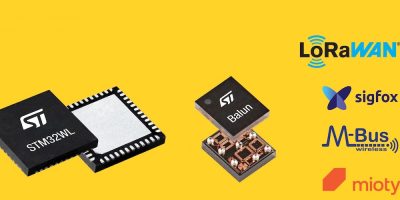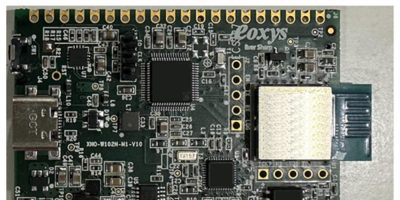Programmable, certified LTE Cat NB2 NB-IoT industrial modules, the SR87M01 series announced by STMicroelectronics, cover worldwide cellular frequency bands and integrate advanced security features.
The low power modules combine reliable and robust NB-IoT data communication with accurate and resilient GNSS geo-location capability for IoT devices and assets.
According to ST, the ST87M01 is one of the first IoT cellular products worldwide offered in accordance with the latest 3GPP Release 15. It provides extended multi-regional LTE coverage. The integrated native GNSS receiver with multi-constellation access delivers localisation with power saving features while operating during NB-IoT sleep time slots.
The module has dimensions of just 10.6 x 12.8mm and is in an LGA package.
It is qualified over the industrial temperature range (-40 to +85 degrees C), with low power consumption of less than 2.0 microA in low power mode. Output power is up to +23dBm. The ST87M01 targets wide-ranging IoT applications that require reliable low power wide area network (LPWAN) connectivity, such as smart metering, smart grid, smart building, smart city and smart infrastructure applications, as well as industrial condition monitoring and factory automation, smart agriculture and environmental monitoring. It is also suited to tracking applications such as locating pets, children, and elders, safety monitoring for remote workers, asset tracking for equipment such as power tools, and general intelligent logistics.
The STM8701’s programmable IoT platform lets users embed their own code directly in the module for simple applications. Alternatively, the module can be combined with a separate host microcontroller, for more sophisticated use cases. A variety of protocol stacks is available to handle popular IoT use cases, including IPv6, TCP/UDP, CoAP/LWM2M, MQTT, HTTP/HTTPS and TLS/DTLS. The ST87M01 is designed to support both standardised 3GPP AT commands and ST enhanced AT commands.
An ST4SIM embedded SIM (eSIM) is integrated in the module. This is certified according to the latest industry standards, including GSMA eSA (Security Assurance) certification and includes an embedded secure element (eSE).
The ST87M01 is sampling now to major customers worldwide.







